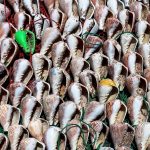Trapping Snakeskin Gourami fish (Trichopodus pectoralis) is commonly done all over Southeast Asia. However, a specific trap for catching them was developed in the Mekong Delta in Vietnam. Its simple principle could be easily applied to many other areas of this fish species distribution. A detailed description of Snakeskin Gourami can be found here.
Snakeskin Gourami fish and their nesting behavior
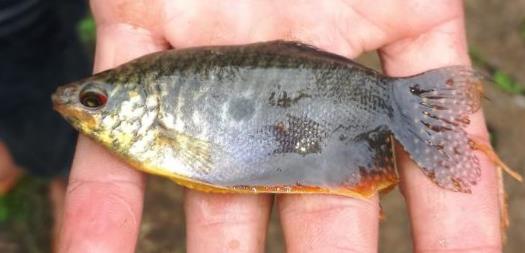
Snakehead Gourami fish spawn in rice fields, canals, ditches, or ponds with many aquatic plants from April to October. They can live in low-oxygenized water. They pair up and find a place to nest and lay eggs. Female fish lay about 200-300 thousand eggs each spawning period. As their eggs and fry are lighter than water, these float on the water’s surface, which looks like whitish foam. Male Snakeskin Gourami will protect their egg and fry and will, therefore, stay underneath these bubbles. They only leave their nest for feeding.

Therefore, when finding white foam next to aquatic plants in slow-moving or stagnant freshwater, people in the Mekong Delta will shuffle this foam into a specialist fish trap. Such trap is called ‘Cái lờ bắt cá sặc’ in Vietnamese. ‘Cái lờ’ means ‘fish trap’ in English, and ‘Cá sặc’ is ‘Snakeskin Gourami fish.’
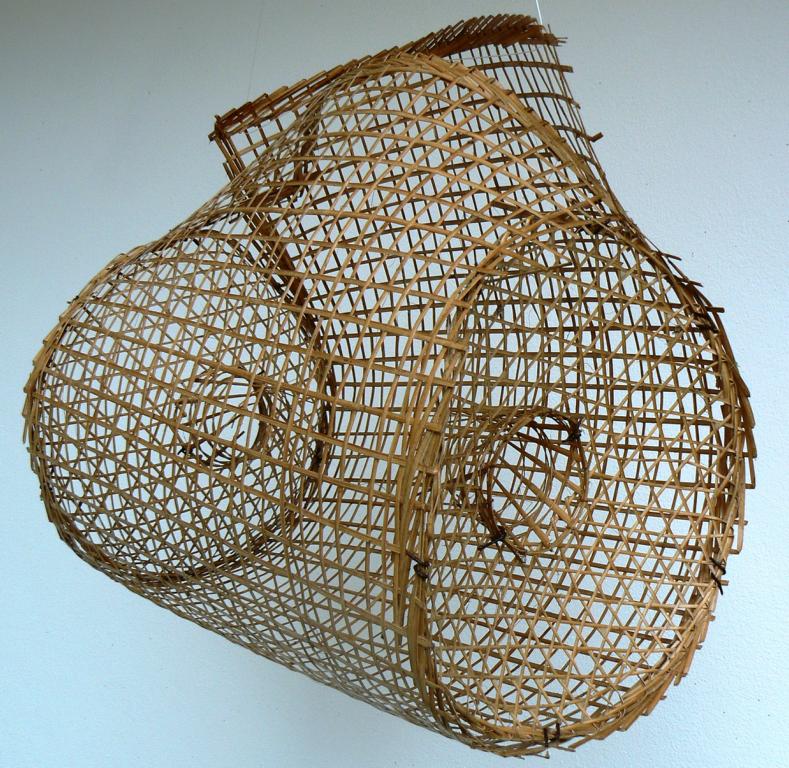
Bamboo fish trapping device for catching Snakeskin Gourami – Cái lờ bắt cá sặc
Trap description and placement
The trap consists of four parts: A finely woven Bamboo mat, two round bamboo end discs, and two entering cones.
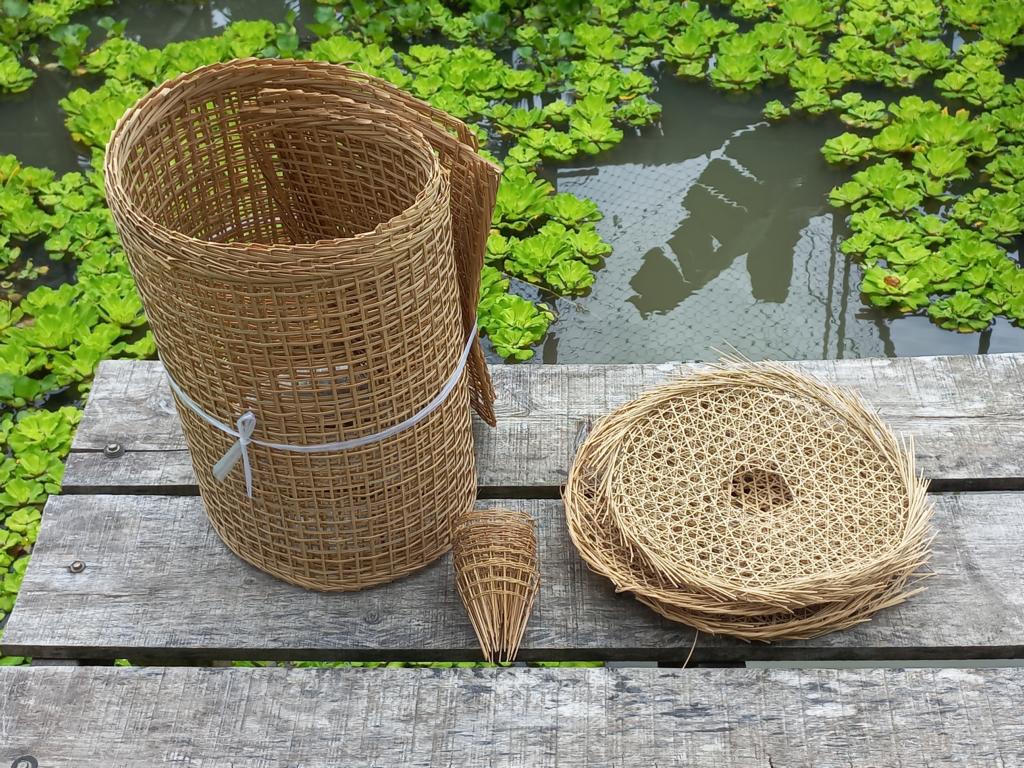

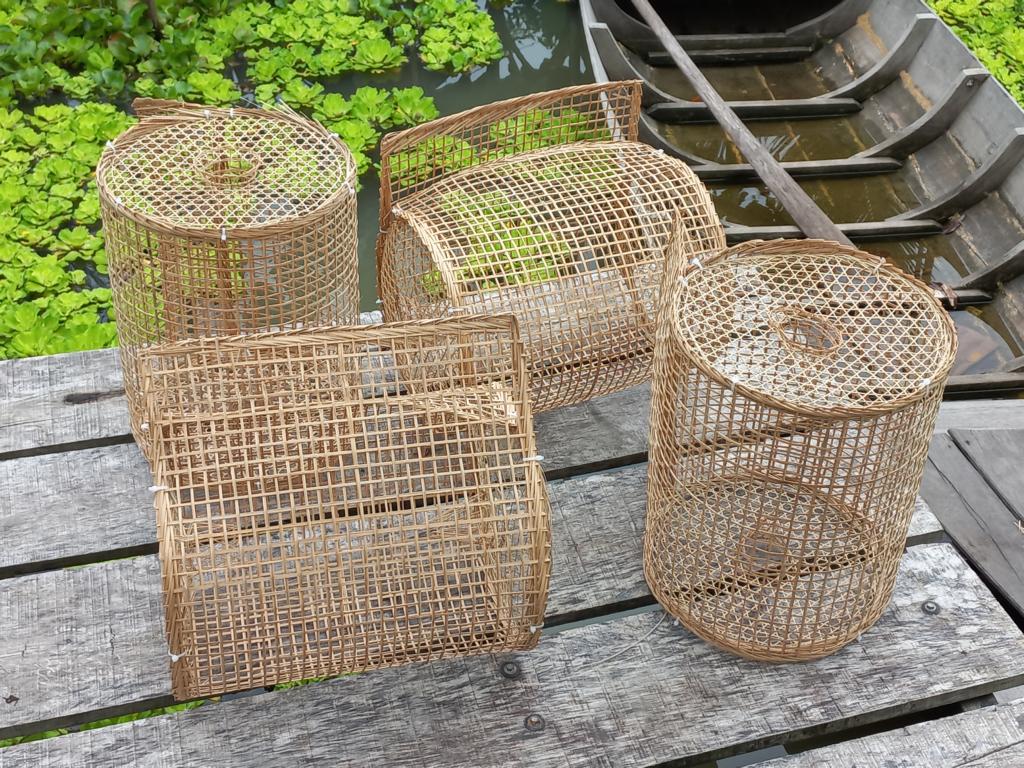
These parts usually are bought at fishing tackle shops on local markets. We bought material for four of these traps and assembled them at the farm where I was staying. We connected the end discs with the bamboo mat using cable binders, which proved fast and easy, but all other binding materials can be used.

After finishing assembling our four traps, we looked for the tell-tale sign of Gourami fish in the farm’s ditches and ponds. We found Gourami foam in many places next to aquatic plants.

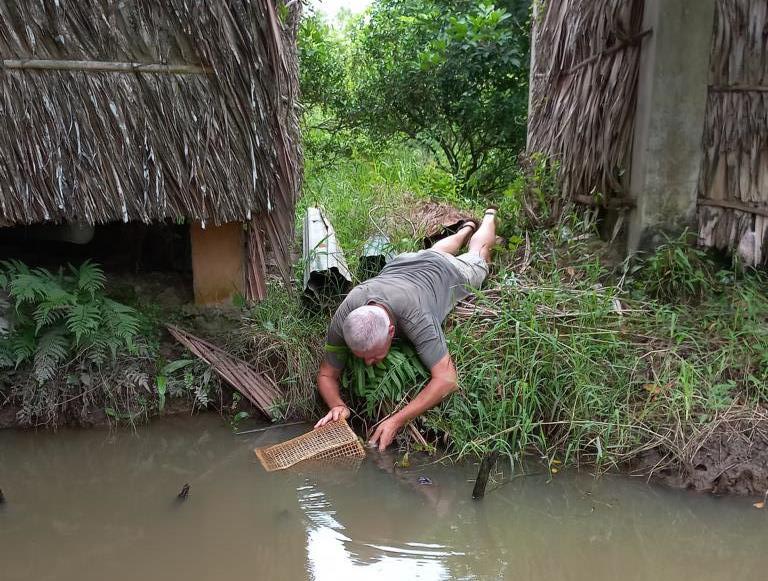
The bamboo traps are placed horizontally and securely in the water. About 1/3 of their diameter has to be above the water surface, and both entrance cones must be securely underwater. After that, the foam nest has to be shoveled into the trap. Finally, some shade on top of the bamboo trap proves beneficial. The following picture shows an ideal setup.

Bamboo fishing trap retrieval
After about 10 minutes of setting the trap, it has to be checked if something was caught. Besides the male Gourami protecting his nest, more Gourami fish are commonly caught. Because Snakeskin Gourami males are pretty docile and will accept other Snakeskin Gourami fish to bask in the shade of his foam nest. Besides catching the mentioned fish species, freshwater crabs are frequently caught in the trap.
Lessons learned from trapping Snakeskin Gourami fish:
- Snakeskin Gourami can be found in every canal, ditch, and pond in the Mekong Delta.
- They will usually be eaten stir-fried with lemongrass or dried and stored for later use.
- White foam on the water is tiny Gourami eggs or fry.
- Shoveling this foam into a bamboo fish trap will catch at least the male Gourami protecting the nest underneath.
- Ten minutes after setting, the traps can already be retrieved.
Further readings about Basket Fish Traps on this website:
Basket fish traps at the seashores of Eastern Africa
Using a stomping basket to catch fish in Vietnam
Fish trapping at a fast-flowing brook in Vietnam
Crafting a bamboo fish trap in Thailand
.





